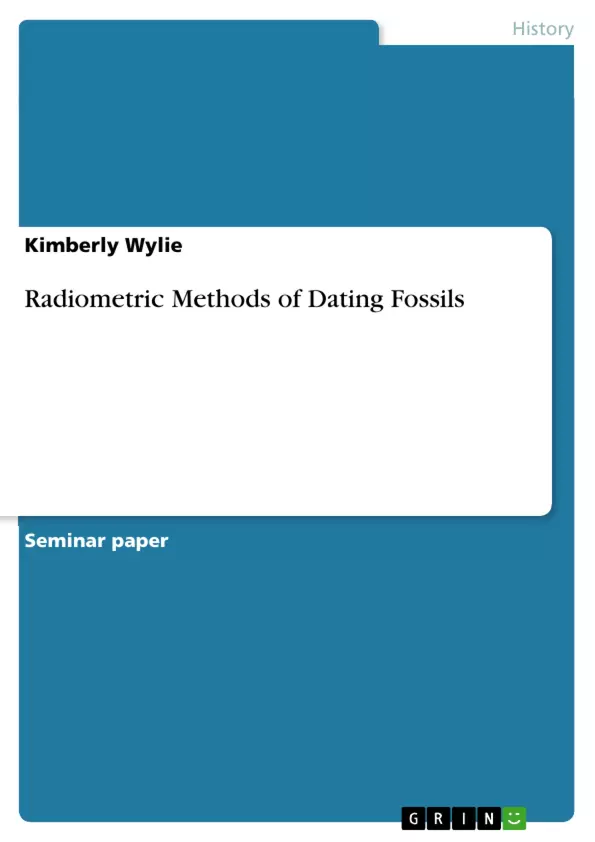Today, most of the methods utilized for chronometric dating of fossils are radiometric. Radiometric dating, in general, refers to the dating of material by using the known rate at which certain radioactive isotopes decay, or at what rate there are collective changes due to radioactivity. Even though isotopes of an element can be different when it comes to atomic mass, the atomic number of the isotope is always the same. Radioactive elements decay at unique rates, dependant on the isotope. This rate of decay is known as half-lives, it is the time necessary for ½ of the atoms to decay in a particular element. The decay follows a geometric scale, in that in the first half-life of an element, ½ of the atoms decay, yet in the second half-life, ½ of those remaining decay, meaning a ¼ of the original atoms decay, and so forth. By measuring this decay, and knowing the half life of an element, scientists can date a sample.
Table of Contents
- Abstract
- Introduction
- Carbon-14 Dating
- Uranium-238
Objectives and Key Themes
This text provides an overview of radiometric dating methods used to determine the age of fossils. It explores the principles behind these methods, focusing on carbon-14 and uranium-238 dating techniques. The text also discusses the limitations and challenges associated with these methods, including potential contamination, calibration issues, and the influence of cosmic radiation.
- Radiometric dating techniques
- Principles of radioactive decay and half-lives
- Applications of carbon-14 and uranium-238 dating
- Limitations and challenges in radiometric dating
- Calibration and accuracy of dating methods
Chapter Summaries
- Abstract: This section provides a brief overview of the text, highlighting the use of radiometric dating methods in determining the age of fossils. It introduces the concept of radioactive decay and its application in chronometric dating.
- Introduction: This section provides a detailed introduction to radiometric dating, explaining its principles and the concept of radioactive isotopes. It emphasizes the importance of knowing the decay rate and half-life of radioactive elements for accurate dating.
- Carbon-14 Dating: This chapter focuses on the widely used method of radiocarbon dating for organic materials. It explains the formation of Carbon-14, its incorporation into living organisms, and its subsequent decay after death. The chapter also discusses the methods used to measure Carbon-14 levels, including the traditional combustion method and the accelerator mass spectrometer technique. Additionally, it explores the limitations of Carbon-14 dating, such as contamination and the need for calibration due to variations in cosmic radiation.
- Uranium-238: This chapter explores another radiometric dating method based on the decay of Uranium-238 to Thorium-230 and ultimately to Lead 206. The chapter describes the applications of this method in dating marine and playa lake sediments, as well as the use of fission tracks for dating geological layers. It also discusses the limitations associated with Uranium-238 dating, including potential leakage of parent and daughter isotopes and the presence of daughter isotopes at the time of rock formation.
Keywords
Radiometric dating, chronometric dating, radioactive decay, half-life, Carbon-14 dating, Uranium-238 dating, fossil dating, contamination, calibration, cosmic radiation, fission tracks, geological layers, marine sediments.
- Arbeit zitieren
- Kimberly Wylie (Autor:in), 2004, Radiometric Methods of Dating Fossils, München, GRIN Verlag, https://www.grin.com/document/57779



